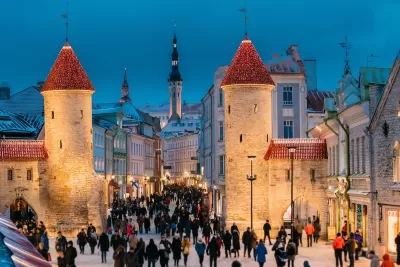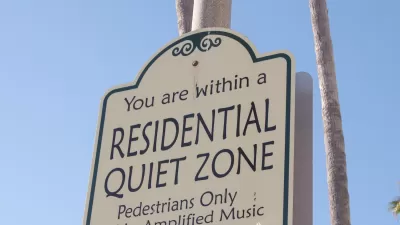European Union cities are required to create ‘noise maps’ and strategic plans for reducing environmental noise.

Tallinn, Estonia is implementing a “noise reduction action plan” aimed at reducing unwanted noise in public spaces. According to an article in Smart Cities World, “As part of the plan, the city will strengthen its public transport network, build more sidewalks, and expand segregated cycling lanes.”
Close to half of Tallinn’s population experiences excessive noise. “According to a study by the University of Tartu, reducing average road traffic noise below 50 decibels (dB) citywide could prevent 140 stroke cases and 130 cases of ischemic heart disease annually.”
In 2022, the city created a ‘noise map’ indicating the most noise-heavy neighborhoods. The action plan focuses on encouraging more sustainable mobility and reducing the number of large vehicles on the city’s roads. “The city is investing in better roads, tram lines, and public transport corridors while also protecting green areas from noise pollution and improving sound insulation for noise-sensitive buildings.”
European Union cities with populations of over 100,000 are tasked by law with creating noise maps and action plans.
FULL STORY: Tallinn implements noise reduction action plan

Planetizen Federal Action Tracker
A weekly monitor of how Trump’s orders and actions are impacting planners and planning in America.

Congressman Proposes Bill to Rename DC Metro “Trump Train”
The Make Autorail Great Again Act would withhold federal funding to the system until the Washington Metropolitan Area Transit Authority (WMATA), rebrands as the Washington Metropolitan Authority for Greater Access (WMAGA).

The Simple Legislative Tool Transforming Vacant Downtowns
In California, Michigan and Georgia, an easy win is bringing dollars — and delight — back to city centers.

DC Backpedals on Bike Lane Protection, Swaps Barriers for Paint
Citing aesthetic concerns, the city is removing the concrete barriers and flexposts that once separated Arizona Avenue cyclists from motor vehicles.

In These Cities, Most New Housing is Under 441 Square Feet
With loosened restrictions on “micro-housing,” tiny units now make up as much as 66% of newly constructed housing.

Albuquerque’s Microtransit: A Planner’s Answer to Food Access Gaps
New microtransit vans in Albuquerque aim to close food access gaps by linking low-income areas to grocery stores, cutting travel times by 30 percent and offering planners a scalable model for equity-focused transit.
Urban Design for Planners 1: Software Tools
This six-course series explores essential urban design concepts using open source software and equips planners with the tools they need to participate fully in the urban design process.
Planning for Universal Design
Learn the tools for implementing Universal Design in planning regulations.
Smith Gee Studio
City of Charlotte
City of Camden Redevelopment Agency
City of Astoria
Transportation Research & Education Center (TREC) at Portland State University
US High Speed Rail Association
City of Camden Redevelopment Agency
Municipality of Princeton (NJ)





























